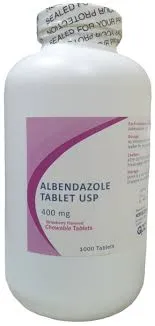- Afrikaans
- Albanian
- Amharic
- Arabic
- Armenian
- Azerbaijani
- Basque
- Belarusian
- Bengali
- Bosnian
- Bulgarian
- Catalan
- Cebuano
- Corsican
- Croatian
- Czech
- Danish
- Dutch
- English
- Esperanto
- Estonian
- Finnish
- French
- Frisian
- Galician
- Georgian
- German
- Greek
- Gujarati
- Haitian Creole
- hausa
- hawaiian
- Hebrew
- Hindi
- Miao
- Hungarian
- Icelandic
- igbo
- Indonesian
- irish
- Italian
- Japanese
- Javanese
- Kannada
- kazakh
- Khmer
- Rwandese
- Korean
- Kurdish
- Kyrgyz
- Lao
- Latin
- Latvian
- Lithuanian
- Luxembourgish
- Macedonian
- Malgashi
- Malay
- Malayalam
- Maltese
- Maori
- Marathi
- Mongolian
- Myanmar
- Nepali
- Norwegian
- Norwegian
- Occitan
- Pashto
- Persian
- Polish
- Portuguese
- Punjabi
- Romanian
- Russian
- Samoan
- Scottish Gaelic
- Serbian
- Sesotho
- Shona
- Sindhi
- Sinhala
- Slovak
- Slovenian
- Somali
- Spanish
- Sundanese
- Swahili
- Swedish
- Tagalog
- Tajik
- Tamil
- Tatar
- Telugu
- Thai
- Turkish
- Turkmen
- Ukrainian
- Urdu
- Uighur
- Uzbek
- Vietnamese
- Welsh
- Bantu
- Yiddish
- Yoruba
- Zulu
Oct . 18, 2024 09:31 Back to list
Tylosin Injection Dosage Guidelines for Effective Use in Veterinary Medicine
Tylosin Injection Dosage A Comprehensive Guide
Tylosin is a macrolide antibiotic that is commonly used in veterinary medicine to treat various bacterial infections in animals. It is particularly effective in combating respiratory and gastrointestinal infections. Tylosin is available in multiple forms, including oral tablets, feed additives, and injectable solutions. This article will focus specifically on the dosage of tylosin injections, covering essential factors that influence dosage, administration techniques, and potential side effects.
Understanding Tylosin and Its Uses
Tylosin is primarily used in livestock, pets, and sometimes in poultry to treat infections caused by susceptible bacteria. In cattle, it is often utilized to manage conditions like pneumonia and foot rot, while in swine, it can help treat respiratory diseases and enteritis. The effectiveness of tylosin is due to its ability to inhibit bacterial growth by interfering with protein synthesis. While beneficial, it is crucial to use this antibiotic responsibly to avoid the development of antibiotic resistance.
Dosage Guidelines
The dosage of tylosin injections can vary based on several factors including the species being treated, the severity of the infection, and the formulation of the medication. It is important to follow veterinary guidelines and product labeling closely to ensure safe and effective treatment.
Typically, the recommended dosage for tylosin injections is as follows
- Cattle For cattle, the dosage is generally 11 to 22 mg per kg of body weight, administered once or twice a day, depending on the severity of the infection. The drug is usually given intramuscularly (IM) or subcutaneously (SC).
- Swine In pigs, the typical dosage is around 8 to 12 mg per kg of body weight, administered IM once a day for a period of three to five days. Again, the specific dosage might vary based on the health status of the animals and the veterinarian's recommendation.
- Small Animals (Dogs and Cats) In dogs and cats, the dosage may range from 5 to 20 mg per kg of body weight, given every 12 to 24 hours for the specified duration determined by the veterinarian.
It's critical to note that these dosages may vary based on the specific tylosin formulation being used, and veterinary oversight is essential to tailor the dosage to each individual case.
Administration Techniques
tylosin injection dosage

When administering tylosin injections, proper technique is crucial to ensure the safety and comfort of the animal. Here are some general guidelines
1. Preparation Always wash your hands and gather necessary supplies, including the tylosin injection vial, a sterilized syringe, and needles. Ensure the vial is properly labeled and has not expired.
2. Injection Site Choose an appropriate injection site based on the size and species of the animal. Common sites for IM injections include the neck muscles or thighs.
3. Technique Clean the injection site with an alcohol swab and let it dry. Insert the needle swiftly at a 90-degree angle for IM injections or at a 45-degree angle for SC injections. Aspirate the syringe to check for blood. If blood is present, withdraw the needle and choose a different site. Administer the tylosin slowly and withdraw the needle smoothly.
4. Post-Injection Care Apply gentle pressure to the injection site with a cotton ball or swab to minimize bleeding. Monitor the animal for any immediate adverse reactions.
Potential Side Effects
While tylosin is generally well-tolerated, certain side effects can occur. Common side effects may include
- Localized pain or swelling at the injection site - Allergic reactions such as itching, redness, or swelling - Gastrointestinal disturbances such as diarrhea or vomiting in some animals
If any severe side effects or allergic reactions occur, it is important to contact a veterinarian immediately.
Conclusion
Tylosin injection is a valuable tool in veterinary medicine for treating bacterial infections in various animal species. However, administering the medication at the correct dosage and following proper techniques is crucial for ensuring the effectiveness of the treatment and the safety of the animals involved. Always consult a veterinarian before starting any treatment regimen and adhere to their recommendations for the best outcomes in animal health. Responsible use of tylosin can lead to improved health and well-being for our animal partners.
-
Guide to Oxytetracycline Injection
NewsMar.27,2025
-
Guide to Colistin Sulphate
NewsMar.27,2025
-
Gentamicin Sulfate: Uses, Price, And Key Information
NewsMar.27,2025
-
Enrofloxacin Injection: Uses, Price, And Supplier Information
NewsMar.27,2025
-
Dexamethasone Sodium Phosphate Injection: Uses, Price, And Key Information
NewsMar.27,2025
-
Albendazole Tablet: Uses, Dosage, Cost, And Key Information
NewsMar.27,2025













